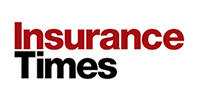Insurance market
Insurance market
Stagnation
The non-life sector has emerged from a sustained period of stagnation where average premiums were either static or falling. The continuation of this gradual recovery follows on from much-needed rate increases applied since 1998. The pressing need for a rating correction is illustrated by the collapse of the Spanish motor insurance group, Alba Compania General de Seguros, which prompted a government department, DGS, to intervene in January 1998. The company is in the hands of the insurance company liquidation agency (CLEA). Nevertheless, profitability in motor business remains far from attractive, due to high accident frequencies and also wider policy coverage. The escalation of claims costs is a longstanding issue which the Baremo system has tried to address and legislators are gradually making concerted efforts to address road safety issues.
Premium stagnation in the past was driven by intense competition, the combination of fresh capital (both foreign and domestic) and increased international reinsurance capacity which suppressed rates in most major business lines. In addition, insurers chose to absorb the premium tax rises first introduced in 1997 rather than pass them on to policyholders.
Fragmented
The Spanish insurance market remains relatively under-developed by European standards and is still fragmented, despite consolidation over the past 15 years. During 2000, the Spanish insurance sector increased 27% to Ptas6.8 trillion pesetas, which accounts for about 6% of GDP. Life insurance increased 40.1%, which is mainly attributed to the sale of unit-linked policies. The non-life sector witnessed an overall growth of 13%, with the motor branch rising faster at an estimated 17%. Growth in most other classes was around the average rate, with the notable exceptions being in travel, legal expense, construction (underpinned by the boom in construction) and ten-year compulsory building insurance, where growth was above average.
In 2000, the Spanish market was made up of 348 insurance companies. Though this is still a large figure, numbers have decreased dramatically since 1993, when there were 630 registered insurers. The number of insurers operating in Spain is expected to fall in coming years. This process will be influenced by the insurance law implemented in 1998, Ley de Ordenación y Supervisión de los Seguros Privados (LOSSP), which introduced, inter alia, tougher solvency and minimum capital requirements. The non-life market is becoming more concentrated, with the top five companies accounting for 28% of total market premium in 1999 compared to 14% in 1992. With further consolidation in 2000 and 2001, this percentage is expected to increase.
Acquisitions
The year 2001 has seen a number of acquisitions and, on January 9, 2001, it was announced that Mapfre Seguros Generales, the household arm of Sistema Mapfre, Spain's largest insurance group, had reached an agreement to acquire funeral expense insurer Finisterre. The rebranded company, Mapfre Finisterre, will absorb Mapfre's small burial expense portfolio. Mapfre Finisterre has over three million policyholders in a class of business purchased by about half of the Spanish population.
In April 2001, Fortis announced its agreement to purchase Baloise (Espana) Seguros y Reaseguros from Baloise (Switzerland). Fortis intends to merge the company with its existing Spanish insurer, Bilbao Compania Anonima de Seguros y Reaseguros. The deal should be finalised during 2001. Further acquisition activity includes Caser's purchase of MAAF Seguros, Liberty Mutual's acquisition of Hartford Seguros and Catalana Occidente's acquisition of Lepanto. Standard & Poor's expects most consolidiation to arise through either larger groups making smaller acquisitions, exemplified by Mapfre's domesitic acquistion strategy, or through the merger of smaller groups. The consolidation seen to date among the major Spanish players has been a function of the merger of larger European parents.
There is a strong foreign presence in Spain, with increasing interest clearly evident in the region. This is exemplified by the numerous global names that feature in the list of leading insurers in Spain. In addition, Lloyd's of London announced the opening of its first representative office in Spain as part of its European expansion drive. Official figures from the DGS put foreign capital in Spain's insurance sector at more than a third of the total. Major Spanish companies are themselves expanding overseas, looking towards Latin America in particular.
Market features
Tied agents
Distribution of non-life products is by tied agents, although recently banks are starting to make inroads in the sale of non-life products. Direct selling operations have started in Spain, and although they enjoyed very strong growth in 2000, they have yet to make any significant impact. In 2000, they had a market share of approximately 5% of the motor sector, but this is expected to rise in 2001.
Although telesales operators are confident that the direct selling route offers substantial rewards relative to the comparatively high selling costs associated with intermediary distribution, its success may be limited by the strong relationship between policyholder and tied agents.
Overall, the insurance distribution system is rationalising under “polarisation” legislation requiring agents to sell the products of just one company or become independent. Already the number of intermediaries has fallen from 200,000 in 1996 to less than 100,000 in 1999. This trend will continue as insurers seek to reduce the number of agencies they deal with.
Reinsurance
On the reinsurance side, significant volumes of reinsurance are placed in the international market. The leading domestic reinsurers are Nacional de Reaseguros and Mapfre Re, although the latter is focussed on Mapfre intra-group business. The reinsurance business written by the domestic players tends to be proportional and profitabilty is generally good reflecting the absence of catastrophe exposures. This absence is a consequence of the Consorcio de Compensación de Seguros, a government agency that covers catastrophe risks in the Spanish market.
Legal forms
Insurance entities must adopt one of the following forms:-
1) limited liability company (sociedad anónima)
2) mutual company – fixed premium (mutuas a prima fija) or variable premium (mutuas a prima Variable)
3) co-operative insurance company – fixed premium (cooperativas de seguros a prima fija) or variable premium (cooperativas de seguros a prima aariable)
4) social welfare mutual (mutalidades de previsión social).
Compulsory insurance
Compulsory insurance includes motor third-party liability, aircraft, huntsmen, nuclear risks and damage caused by hydrocarbons.
Consorcio
The Consorcio de Compensación de Seguros was established by the state over 50 years ago to provide cover against defined catastrophic risks, including natural disasters, flood, terrorism and bodily injury caused by uninsured and/or untraceable drivers. Both CLEA, the insurance company liquidation agency, and the Consorcio are respectively funded by a 0.5% and 3.0% levy on insurance premiums.
Pool Español
In 1990, following volatile underwriting results, six of Spain's leading insurers formed the Pool Español de Grades Riesgos. Each member cedes a uniform percentage of certain large risks to the pool, thereby creating a volume of business large enough to negotiate more favourable reinsurance rates. The emerging benefits have enhanced solvency and greater underwriting stability. Other pools include SEREA, AGROSEGURO, Pool Asegurador de Riesgos Nucleares, AGARA, Pool de Riesgos Medioambientales and Pool de Responsibilidad Civil de Corredores de Seguros.
Insurance regulation and supervision
The regulatory authority is the Ministry of Economy and Finance (Ministerio de Economia y Hacienda) which exercises its powers through the General Insurance Directorate (Dirección General de Seguros (DGS)) and has very broad functions. These include:
1) granting authorisation via the DGS to commence business or expand into new lines
2) authorising the undertaking of portfolio transfers, mergers, demergers and the grouping together of companies
3) revoking authorisation and declaring dissolution.
The DGS is an administrative body within the Ministry of Economy and Finance and has wide powers with respect to the operation of the insurance market. The directorate can be contacted at the following address: -
Paseo de la Castellana 44
Madrid 28046
www.meh.es
The director general himself is appointed directly by the government.
The main powers of the DGS include:
1) control, inspection and supervision of insurance entities (including the calculation of reserves, the submission of annual financial returns and reviewing companies' operations, to intervene when necessary)
2) control of compliance with consolidation accounting rules
3) receipt and gathering of information on the acquisition and transfer of equity holdings in insurance entities
4) supervision of contractual and technical documents used by the companies
5) adoption of special control or enforcement measures
6) co-operation with insurance regulatory authorities from other countries, in respect to situations involving pursuit of insurance business under the right of establishment or freedom to provide services within the EEA
7) authorisation of insurance broking activities in particular classes of business (the Ministry of Finance issues licenses).
Internally, the DGS is divided into four sub-directorates: insurance, management, inspection and pension schemes and funds.
The DGS enjoys a close working relationship with UNESPA (Unión Española de Entidades Aseguradoras y Reaseguradoras), the Spanish insurers' association that represents and promotes the interests of Spanish insurers. UNESPA also liaises with the regulator on regulatory and supervisory issues. Both bodies compile insurance statistics, which are broadly comparable, and UNESPA conducts extensive technical analysis (for example, research into loss reserves) and specialist reports on most classes of insurance.
Insurance law
In Spanish legislation, the basic rules governing insurance are contained in three provisions: Law number 30/1995 of November 8, 1995 (Ley de Ordenación y Supervisión de los Seguros Privados (LOSSP)), which governs private insurance, Royal Decree Number 2486/1998 of November 1998 (ROSSP) which implements LOSSP, and Law number 50/1980 of October 8, 1980, on insurance contracts (Ley de Contrato de Seguros).
LOSSP was passed by the Spanish parliament in 1995, but its implementation was subject to extensive delays owing to the difficulties associated with harmonising the fragmented legal framework. LOSSP is an important piece of legislation, enacting the third generation of European insurance directives, the third motor liability directive, the directive on the reinforcement of supervision of financial and insurance institutions, as well as part of the accounts directives. It not only supplements the Private Insurance Law 33/84 of 1984, the other main piece of national insurance legislation, but introduces fundamental changes to the legislation governing private insurance, as well as altering a number of legislative rules (for example, the motor traffic law).
LOSSP attempted to address two fundamental needs:
1) to adapt insurance law to the so-called third directives, which embraced the single administrative authorisation concept. This has accelerated the sector's internationalisation by allowing any insurer authorised to operate in a member state of the European Economic Area (EEA) to operate in any other EEA state.
2) to participate in a process of EEA convergence in such matters as the requirements to operate as an insurance company, the administrative, regulatory and supervisory procedure and the protection of insureds.
The main innovations of the legislation included tougher control of solvency of insurers, thereby protecting insured interests, and the introduction of a compensation system, the Baremo, to calculate bodily injury awards subsequent to motor accidents.
Important changes introduced by LOSSP included the following :
The Law of Intermediation of Private Insurance (Ley de Mediación de Seguros Privados) 9/1992 of April 30, 1992, regulates the activities of brokers and agents who must be licensed. LOSSP substantially modified the intermediation law 9/1992, which includes restricting the number of insurance companies an agent may represent.
Law 50/1980, Ley de Contrato de Seguro, modified by Law 20/1990 and LOSSP, governs the operation of insurance contracts.
When an insurer becomes insolvent, the Comisión Liquidadora de Entidades Aseguradoras (CLEA), founded by Royal Decree Law on July 11, 1984, is responsible for evaluating the assets during the winding-up process. LOSSP makes few changes to the existing legislation in this area.
Insurers and reinsurers must be registered with the Registrar of Insurance Companies. Foreign companies, not incorporated in the EU, transacting business in Spain are required to do the following:
Subsequent to LOSSP, an accounting law, Plan de Contabilidad de las Entidades Aseguradoras (“the plan”) was passed in 1997 by Royal Decree 2014/97. However, the new accounting returns, implementing various presentational changes were not seen until 1998. The main changes included separate technical accounts for life and non-life business, and a non-technical account. “Acquisition expenses” now include expenses incurred by underwriting departments. Previously these costs were included in “underwriting costs”. In accordance with the single transitional provision of the plan, companies have not been required to restate the 1997 income statement figures. On the balance sheet side, the modifications related principally to the entries for other financial investments, expenses and deferred charges. The effect of the reclassification is not significant. Modifications to the calculation of technical reserves came into force on January 1, 1999, but, again, the effects have not been significant.
Annual financial information is compiled for the DGS, according to the standard format of the National Plan of Accounts, and must be filed before July 10 by direct companies and before September 15 by reinsurers. The same format is used by quoted insurance companies in their annual reports to shareholders, although the information presented will only be a subset of that sent to the DGS.
LOSSP also introduced more rigorous capital requirements:
Under the initial proposals, 100% was required to be paid up. However, a large proportion of firms were unable to meet this increase, which was to be implemented by December 31, 1997. Consequently, and following intervention by UNESPA, the 50%, level established by earlier legislation, was retained.
In addition to the above, insurance entities must possess a guarantee fund, of which the minimum amount varies depending on the type of entity, business written and premium volumes. The minimum amount of the guarantee fund is set at ECU800,000 for life and reinsurance business, ECU400,000 for credit and third party liability, and ECU300,000 for the remaining classes, except property damage, legal expenses, assistance and burial expenses, for which the requirement is ECU200,000.
Prior to the implementation of the Insurance Supervisory Law 33/1984, mutual companies operated under different legislation from stock companies. However, since 1984 supervision and regulation has converged, although the two legal forms are regulated under different chapters with their own peculiarities.
For composite companies, separate life and non-life financial statements are mandatory for solvency assessment. All insurers must abide by the EU regulations regarding minimum solvency margins.
General
Spain covers an area of 194,897 square miles (505,000sq km) and has approximately 39 million inhabitants. The capital city, Madrid, has a population of three million and is also the national insurance centre. Other major cities are Barcelona, Bilbao, Valencia and Seville.
The Spanish economy is supported by manufacturing industries, agriculture and tourism. The national currency is the peseta (Ptas) but, with the move to economic and monetary union adopted by 11 EU countries in January 1999 (Austria, Belgium, Finland, France, Germany, Ireland, Italy, Luxembourg, Netherlands and Portugal), the currency will become the Euro (e) in January 2003. The agreed central rate is Ptas166.39 = e1. £1 = Ptas262.94 as at August 22, 2001.
Spain has been a parliamentary monarchy since 1975 and is currently led by Prime Minister Jose Maria Aznar, elected leader of the centre-right Popular party since May 1996. The March 2000 general elections returned Mr Aznar to power, this time with an absolute majority.
Rationale
The ratings on The Kingdom of Spain reflect:
Spain's ratings remain constrained by:
Outlook
The outlook reflects Standard & Poor's opinion that a narrowing of the gap in creditworthiness between Spain and its higher-rated EU partners will require further progress in catching up with core EU economies and continued fiscal consolidation. Lower unemployment remains key to increasing Spain's average level of per capita income and to strengthen the economy's capacity to deal with the unavoidable long-term reform of the pension system.
Spain insurance analyst contacts:
Tristan Whittingham London 020 7847 7086
Laura Santori London 020 7847 7062




































